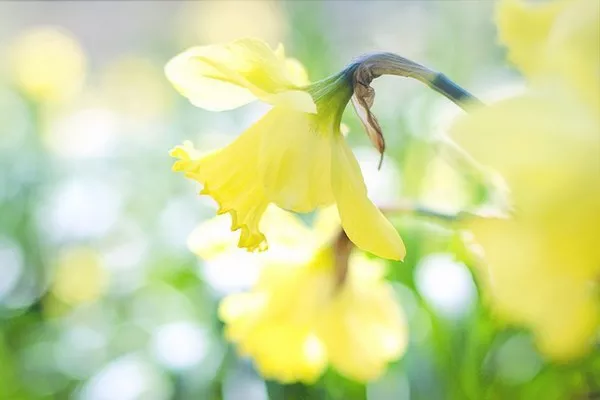The allure of flowers can brighten any space and lift one’s spirits. However, for those who share their homes with feline companions, a careful selection of floral arrangements becomes imperative. While flowers are a symbol of beauty and fragrance, many of them can pose a hidden danger to our beloved cats. Understanding which flowers are toxic to cats is a crucial step towards creating a safe and harmonious living environment for both humans and their four-legged friends.
The Importance of Pet Safety
Cats are known for their curious nature and propensity to explore their surroundings. Their inquisitiveness often leads them to investigate plants, including flowers, by smelling, chewing, or even nibbling on them. Unfortunately, some flowers contain compounds that can be harmful or even deadly to cats when ingested. Therefore, pet owners must be vigilant when choosing flowers to adorn their homes.
Common Toxic Flowers
Numerous flowers are known to be toxic to cats. While the list is extensive, several popular flowers stand out due to their prevalence and potential danger:
1. Lilies
Lilies are well-loved for their elegant appearance and delicate fragrance. However, they are among the most toxic flowers for cats. Even small ingestions, such as licking pollen off their fur or drinking water from a vase containing lilies, can lead to severe kidney damage and failure.
2. Tulips and Narcissus
Tulips and narcissus bulbs contain toxins that can cause gastrointestinal upset, drooling, and, in more severe cases, cardiac abnormalities and organ damage.
3. Sago Palm
Though not a flower, the sago palm is a common decorative plant that poses a significant threat to cats. Ingesting any part of the plant, especially the seeds, can lead to severe liver damage and potentially be fatal.
4. Azaleas and Rhododendrons
Azaleas and rhododendrons contain grayanotoxins, which can cause vomiting, diarrhea, and potentially more severe symptoms like heart arrhythmias and even death.
5. Chrysanthemums
Chrysanthemums, while vibrant and attractive, contain pyrethrins, which can cause drooling, vomiting, diarrhea, and even depression in cats.
6. Daffodils
Daffodils contain compounds called lycorine, which can cause vomiting, diarrhea, abdominal pain, and, in severe cases, convulsions.
Understanding Toxic Compounds
The toxicity of these flowers stems from various chemical compounds they contain. These compounds can range from alkaloids to glycosides and even essential oils. When ingested or even just touched, these compounds can elicit adverse reactions in cats. The severity of the reaction depends on the quantity ingested, the cat’s size, and their individual sensitivity.
Recognizing Symptoms of Flower Toxicity
It’s essential for cat owners to be aware of the symptoms that might indicate flower toxicity. These can include:
Vomiting and Diarrhea: Gastrointestinal distress is a common sign of flower toxicity. If a cat displays repeated vomiting or diarrhea, especially after being near flowers, it could indicate exposure to toxic compounds.
Drooling and Mouth Irritation: Irritation in the mouth and excessive drooling might suggest that a cat has come into contact with a toxic flower.
Lethargy and Weakness: Flowers that are toxic to cats can also cause general lethargy, weakness, and a lack of appetite.
Respiratory Distress: In some cases, exposure to certain flowers can lead to respiratory difficulties in cats. Labored breathing or wheezing should be taken seriously.
Abnormal Heart Rate: Flowers like azaleas can affect a cat’s heart rate, leading to irregularities that require immediate attention.
Preventing Flower Toxicity
Prevention is the key to keeping our feline companions safe from flower toxicity. Here are some steps you can take:
Educate Yourself: Familiarize yourself with the list of flowers that are toxic to cats. This knowledge will empower you to make informed choices when bringing flowers into your home.
Choose Safe Alternatives: Opt for cat-friendly flowers and plants when decorating your home. There are numerous non-toxic options that can add beauty without compromising your pet’s safety.
Secure Arrangements: If you choose to display flowers that may be toxic, ensure they are out of your cat’s reach. Place arrangements on high shelves or surfaces that your cat cannot access.
Supervise Outdoor Time: If your cat spends time outdoors, be cautious about the plants they come into contact with. Many toxic flowers can also be found in gardens and yards.
Consult Your Veterinarian: If you suspect your cat has ingested or come into contact with a toxic flower, consult your veterinarian immediately. Quick action can make a significant difference in your cat’s outcome.
Final Thoughts
As responsible pet owners, it’s our duty to create a safe and enriching environment for our feline friends. Understanding the potential dangers posed by certain flowers is a crucial aspect of this responsibility. By familiarizing ourselves with the list of flowers toxic to cats and taking preventive measures, we can ensure that our homes remain havens of health and happiness for both us and our beloved pets. Remember, a little knowledge goes a long way in safeguarding our furry companions from the hidden dangers that some flowers may pose.


